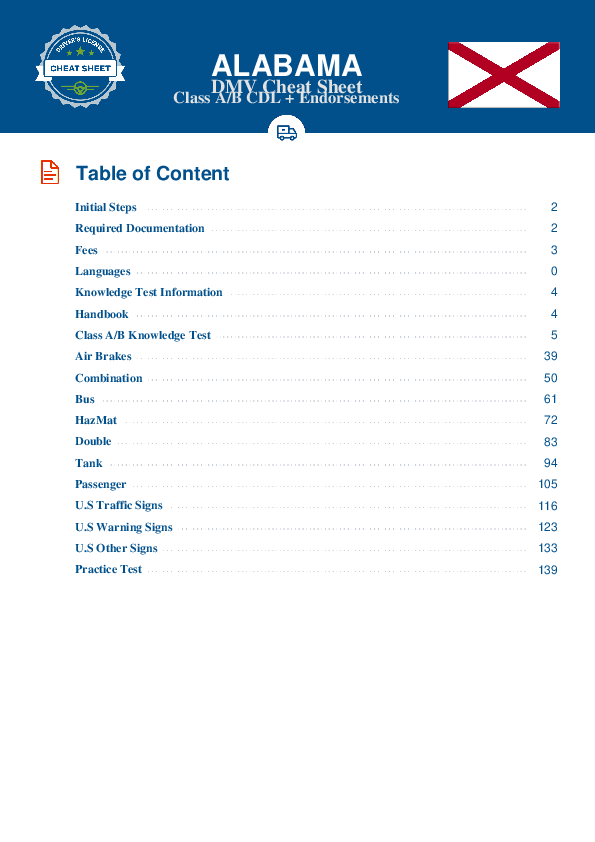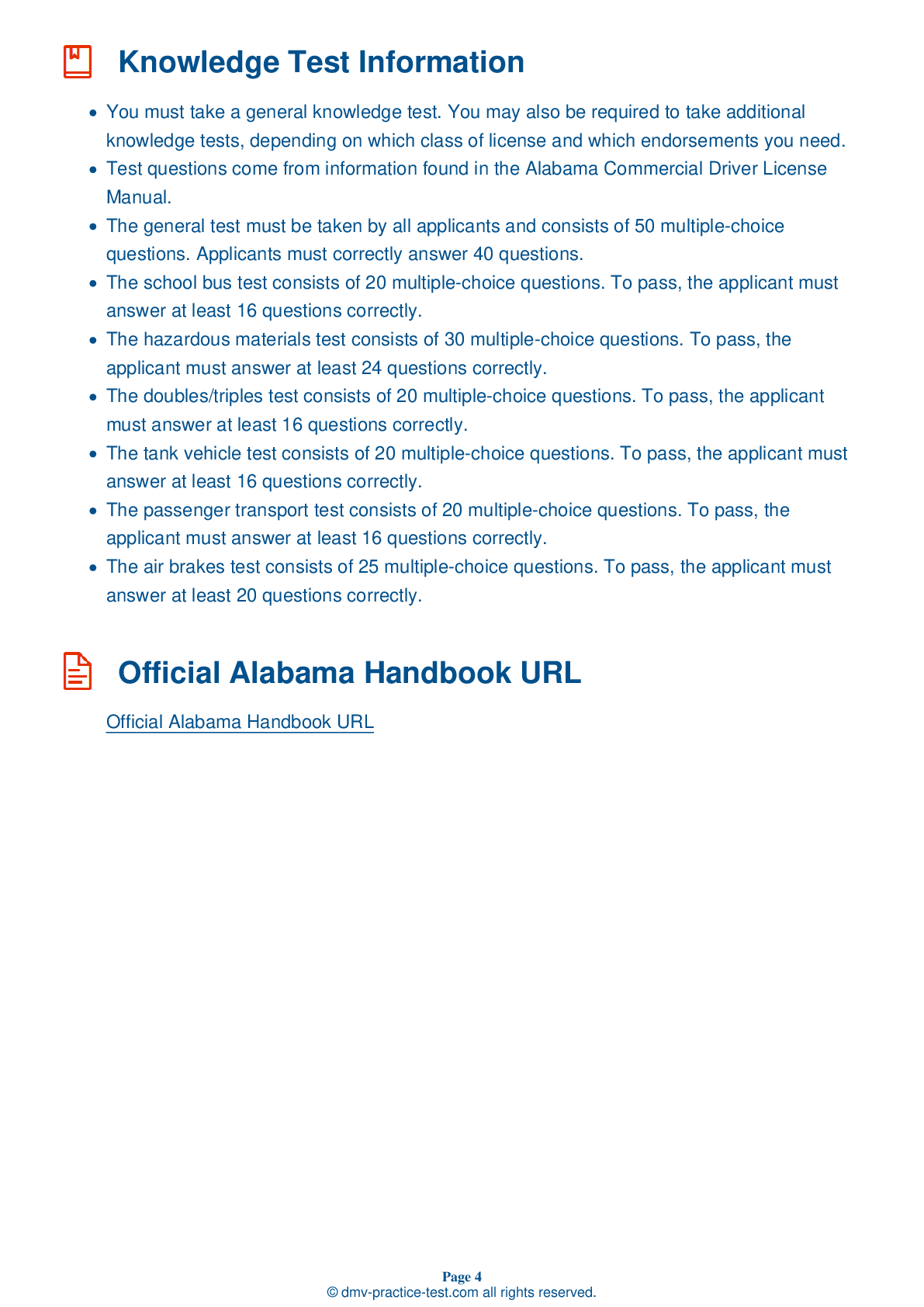Combination Vehicles Practice Test | Alabama 2025 #2 Page 2 of 3
Train for FREE online with our Alabama CDL combination vehicle test. The official exam test consists of several obligatory parts, with all of them checking your knowledge of different blocks of road rules. If you need to obtain a AL combination license in 2025, practice as much as possible. Free sample tests published on our website will help you check and improve your knowledge and boost your grades. Please bear in mind that DMV requirements for issuing a combination license may vary from state to state.
8 . When coupling, after you've connected the air lines to the trailer, you should:
Correctly following the steps to couple and uncouple trailers is vital to safely operating a combination vehicle. After connecting the air lines to the trailer while coupling, you should supply air to the trailer.
9 . ____ are the cause of more than half of all accident-related truck driver deaths.
More than half of all accident-related truck driver deaths are a result of truck rollovers. To help prevent a rollover, be sure to load cargo low to the ground and centered on your rig. Take corners slowly and carefully.
10 . When braking with ABS, you should:
When operating a vehicle with an Anti-Lock Braking System (ABS), you should apply your brakes in the same manner as you would if operating a vehicle without ABS.
11 . When glad hands are coupled, the seals should be pressed together at a ____ angle.
When coupling, be sure to couple the proper glad hands. When glad hands are connected, the seals should be pressed together at a 90-degree angle.
12 . Before backing your tractor under the trailer, make sure your trailer brakes are:
Correctly following the steps to couple and uncouple trailers is vital to safely operating a combination vehicle. Before backing your tractor under the trailer while coupling, make sure your trailer brakes are locked.
13 . Starting in which year were newly manufactured trailers required to have ABS?
All trailers and converter dollies manufactured on or after March 1, 1998 must be equipped with Anti-Lock Braking Systems (ABS).
14 . When uncoupling a trailer, landing gear should be:
Landing gear, or trailer supports, should always be completely raised before a vehicle is driven. When uncoupling, landing gear should be lowered to make firm contact with the ground. If a trailer is loaded when it is being uncoupled, you should lower the landing gear and turn the crank a few additional times to remove some weight from the trailer.
See the exact questions that will be on the 2025 Alabama DMV exam.
99.2% of people who use the cheat sheet pass the FIRST TIME
Lillian MCcranie explains how our CDL study guide was helpful in passing the exam and recommends it to everyone.
Cameron tells us how he purchased the CDL exam, and found it to be a useful tool which helped him pass the exam and find a job.



